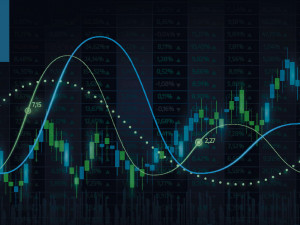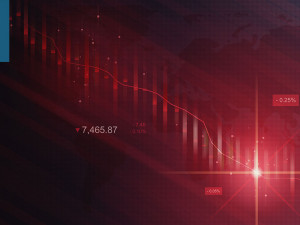
Services output plummets
Morning mid-market rates – The majors
25th May: Highlights
- Economy grinding to a halt
- New Home sales collapse as rates rise
- Composite output data falls marginally
Output close to contraction
A reading of below 50 signals contraction, and it appears that output is heading in that direction, according to forward-looking indicators. Manufacturing output also fell, but by a less significant amount than services, which makes up around 80% of GDP.
Companies’ costs hit another all-time high as energy bills skyrocketed. There is no cap on commercial fuel bills, so they face the full impact of the current crisis.
The survey points to the economy virtually grinding to a halt. The data will also have an effect on the Bank of England’s plans to tighten monetary policy further after hikes at four consecutive meetings. Activity has slumped to a fifteen-month low, which was a direct result of the Covid lockdowns at the time.
It now looks likely that the Government will introduce measures to help the poorest families cope with the rising cost of energy as the energy cap is set to rise to £2,800 a year in October from its current level just shy of £2,000.
The pace of the slowdown in activity is increasing along with inflation, and it is becoming clearer almost by the day that the economy will face a recession, certainly by the end of the year, although it could come even sooner.
Measures that could be introduced by the Chancellor coils include a windfall tax on energy companies, a measure that was dismissed by Rishi Sunak only a week or so ago.
The Prime Minister is set to face a tough time in PM’s questions in the House of Commons later today as even the poor economic news is set to be overshadowed by further revelations, mostly coming from junior staff, of further breaking of Covid rules during the first lockdown.
Boris Johnson will face further calls to resign as it is expected that the report from the country’s senior Civil Servant, Sue Gray.
Yesterday’s data saw the pound lose ground against both the dollar and euro.
Against the dollar, its recent bout of relative strength came to a halt, falling to 1.2471, although it rallied late in the day, to close at 1.2532. Against the single currency, it reached a low of 1.1644, closing at 1.1672.
Considering your next transfer? Log in to compare live quotes today.
FOMC may have no control over soft landing
Yesterday data for new home sales was published, and they showed that the headline fell by over 27% in April, falling from a little over 700k in March to just under 600k last month.
Such a poor start to the second quarter is leading several observers to renew predictions of a recession, although that is not expected to be confirmed until the fourth quarter.
Also released yesterday were preliminary purchase managers reports on output in the economy so far this month. The composite index of services and manufacturing output fell from 56 in April to 53.6 so far this month. The individual contributors fell from 59.2 to 57.5 for manufacturing and 55.6 to 53.5 for services.
Higher prices for both business and consumers are cooling demand significantly, with virtually no area of the economy escaping.
The Federal Reserve of Chicago’s National Activity Index bucked the recent trend for lower activity, rising from 0.36 in March to 0.47 in April. This data is designed to gauge overall economic activity together with related inflationary pressure.
Fed Chairman Jerome Powell who was finally sworn in for his second term this week faces an almost impossible task in producing a soft-landing for the economy that is cooling at a significant rate. With so many moving parts to contend with, the FOMC is unable to juggle the slowdown and bring inflation down close to its target level.
Having provided what it considers to be sufficient support to avoid a recession, the Fed is expected to raise rates by fifty basis points at its meeting next month, although expectations of a further fifty basis points in late July are now less certain.
The dollar index appears to be reaching the end of its recent correction. Yesterday, it fell to a low of 101.64, closing at 101.65.
Technically, the 101 area is around a 50% retracement of its recent rise and should provide some support.
No one admits to buying it but the euro, but it is rising
While very few investors, and even fewer traders would consider themselves to be bullish for the single currency’s medium to long term future, they are moving to decreasing long dollar positions which provides a boost for the euro, and to a lesser extent, given yesterday’s data, Sterling.
Lagarde believes that the era of negative interest rates will officially be complete by the end of the third quarter, while some members of the Governing Council are openly discussing matching the Federal Reserve with a fifty-basis point hike.
Dampening that significant move to a hawkish outlook, Banque de France Governor Villeroy commented yesterday that such an action is not currently the consensus view of the Central Bank.
He went on to say that although the ECB is in the process of normalizing monetary policy, there is little expatiation that it needs to move with such haste.
This dampened the bullish view of the market towards the euro. However, the more hawkish members of the ECB see this as their opportunity to galvanize the Bank into action, commenting that a fifty-basis point hike in July is entirely appropriate.
The Governor of the Bank of Austria, Robert Holzman, said yesterday that it is extremely important in the fight against inflation that interest rates are in positive territory by the end of the year.
The next few meetings of the Governing Council are expected to produce some worthwhile headlines, but also an increase in the level of volatility for the euro.
Yesterday appeared to signal the start of the additional volatility. The single currency traded between 1.0748 and 1.0661. It closed at 1.0736, although it may be coming to an end of its recent correction.

About Alan Hill
Alan has been involved in the FX market for more than 25 years and brings a wealth of experience to his content. His knowledge has been gained while trading through some of the most volatile periods of recent history. His commentary relies on an understanding of past events and how they will affect future market performance.”



